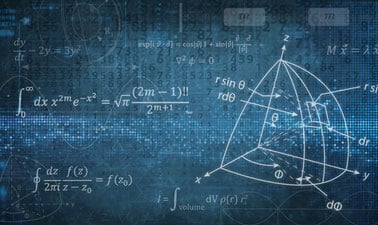
Quantum sensing is the most technologically advanced area of quantum information science. It also requires the most advanced prerequisites to enter. These two courses provide a foundation for further work in quantum information science. After completing this sequence (which must be taken in order), you will have the theoretical background for working in quantum sensing. The material is at the undergraduate level. It is condensed in two courses to allow you prepare faster for quantum sensing than other options currently available.
Read more
Quantum sensing is the most technologically advanced area of quantum information science. It also requires the most advanced prerequisites to enter. These two courses provide a foundation for further work in quantum information science. After completing this sequence (which must be taken in order), you will have the theoretical background for working in quantum sensing. The material is at the undergraduate level. It is condensed in two courses to allow you prepare faster for quantum sensing than other options currently available.
Quantum sensing is the most technologically advanced area of quantum information science. It also requires the most advanced prerequisites to enter. These two courses provide a foundation for further work in quantum information science. After completing this sequence (which must be taken in order), you will have the theoretical background for working in quantum sensing. The material is at the undergraduate level. It is condensed in two courses to allow you prepare faster for quantum sensing than other options currently available.
The material culminates in a description of the quantum mechanical ideas needed to make make laser interferometry gravitational observatory (LIGO) work---the most advanced quantum sensor in the world.
What you'll learn
- How to work with math as a practitioner, not a technician for calculus, vector calculus, complex variables, linear algebra, differential equations, and Fourier series.
- What quantum superposition, the principal of complementarity, and quantum measurement are. How entanglement leads to bizarre phenomena, such as seeing something without having photons interact with them.
- The formal developments of quantum mechanics employing an operator-based representation-independent formalism and the four fundamental operator identities.
- The science behind how quantum mechanics is used to improve the accuracy of the laser interferometer gravitational wave observatory---humankind’s most accurate quantum sensor.
What's inside
One course
Mathematical and Computational Methods
(2 hours)
Mathematical and Computational Methods
(2 hours)Save this collection
OpenCourser helps millions of learners each year. People visit us to learn workspace skills, ace their exams, and nurture their curiosity.
Our extensive catalog contains over 50,000 courses and twice as many books. Browse by search, by topic, or even by career interests. We'll match you to the right resources quickly.
Find this site helpful? Tell a friend about us.
We're supported by our community of learners. When you purchase or subscribe to courses and programs or purchase books, we may earn a commission from our partners.
Your purchases help us maintain our catalog and keep our servers humming without ads.
Thank you for supporting OpenCourser.



